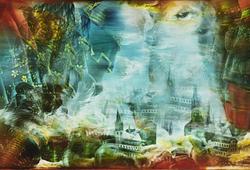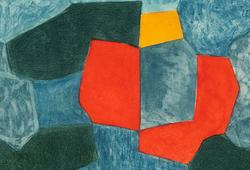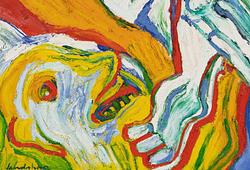A blanc de chine figure of Zhenwu, first half of 17th century.
The warlike figure is seated on a rocky throne with his left arm raised in a gesture of deterrence whilst a snake and the head of the tortoise project from the rocks below. He wears chest and thigh armour under his robe with a cap on his head, his characteristic long hair falls to his shoulders. Height 23.5 cm.
Restoration to hand and animal heads.
Provenance
Property of a private collector.
Purchased at Lawrence Auctioneers of Crewkerne, Somerset, 3 November 2005, lot no 624.
Exhibitions
Compare, an example of this model in the Metropolitan Museum, New York, credit line: Purchase by subscription, 1879. Object Number: 79.2.481.
Compare also one in the Virginia Museum of Fine Art.
Literature
John Ayers, Blanc de Chine, Divine Images in Porcelain, China Institute Gallery, New York, 2002, Item no 41. Page 90
Donnelly, 1969. Pl 101A.
Kerr and Ayers, 2002, No. 26.
More information
Zhenwu is sometimes reffered to as 'Perfect Warrior, Dark Lord of the Northern Quadrant'.
Legend has it that Zhengwu was successful in defeating the demon kings despite the intervention of a snake and tortoise (which normally appear when he is depicted). He was thus accorded the titels of both 'first Lord of the Highest Heaven' and 'Perfected Warrior'. He subsequently became one of the most popular Daoist deities in small-scale devotional sculpture. A temple to honour him was built at the norhernmost point of the Forbidden City.
His role as a guardian reflects his association with the north, the direction from which China was constantly threatened by neighboring peoples from Central Asia.










































